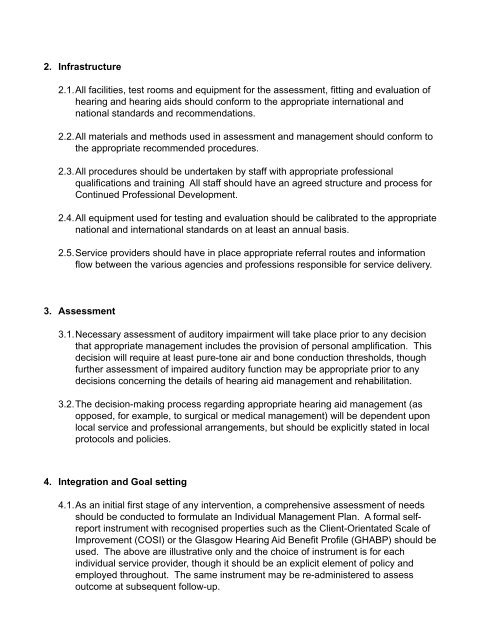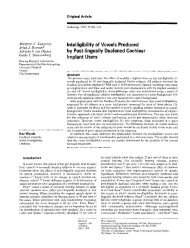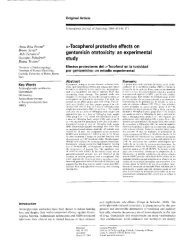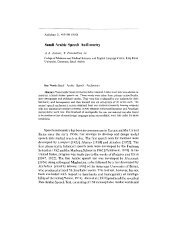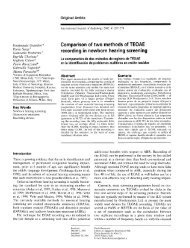Good Practice Guidance for Adult Hearing Aid Fittings and Services ...
Good Practice Guidance for Adult Hearing Aid Fittings and Services ...
Good Practice Guidance for Adult Hearing Aid Fittings and Services ...
Create successful ePaper yourself
Turn your PDF publications into a flip-book with our unique Google optimized e-Paper software.
2. Infrastructure<br />
2.1.All facilities, test rooms <strong>and</strong> equipment <strong>for</strong> the assessment, fitting <strong>and</strong> evaluation of<br />
hearing <strong>and</strong> hearing aids should con<strong>for</strong>m to the appropriate international <strong>and</strong><br />
national st<strong>and</strong>ards <strong>and</strong> recommendations.<br />
2.2.All materials <strong>and</strong> methods used in assessment <strong>and</strong> management should con<strong>for</strong>m to<br />
the appropriate recommended procedures.<br />
2.3.All procedures should be undertaken by staff with appropriate professional<br />
qualifications <strong>and</strong> training All staff should have an agreed structure <strong>and</strong> process <strong>for</strong><br />
Continued Professional Development.<br />
2.4.All equipment used <strong>for</strong> testing <strong>and</strong> evaluation should be calibrated to the appropriate<br />
national <strong>and</strong> international st<strong>and</strong>ards on at least an annual basis.<br />
2.5.Service providers should have in place appropriate referral routes <strong>and</strong> in<strong>for</strong>mation<br />
flow between the various agencies <strong>and</strong> professions responsible <strong>for</strong> service delivery.<br />
3. Assessment<br />
3.1.Necessary assessment of auditory impairment will take place prior to any decision<br />
that appropriate management includes the provision of personal amplification. This<br />
decision will require at least pure-tone air <strong>and</strong> bone conduction thresholds, though<br />
further assessment of impaired auditory function may be appropriate prior to any<br />
decisions concerning the details of hearing aid management <strong>and</strong> rehabilitation.<br />
3.2.The decision-making process regarding appropriate hearing aid management (as<br />
opposed, <strong>for</strong> example, to surgical or medical management) will be dependent upon<br />
local service <strong>and</strong> professional arrangements, but should be explicitly stated in local<br />
protocols <strong>and</strong> policies.<br />
4. Integration <strong>and</strong> Goal setting<br />
4.1.As an initial first stage of any intervention, a comprehensive assessment of needs<br />
should be conducted to <strong>for</strong>mulate an Individual Management Plan. A <strong>for</strong>mal selfreport<br />
instrument with recognised properties such as the Client-Orientated Scale of<br />
Improvement (COSI) or the Glasgow <strong>Hearing</strong> <strong>Aid</strong> Benefit Profile (GHABP) should be<br />
used. The above are illustrative only <strong>and</strong> the choice of instrument is <strong>for</strong> each<br />
individual service provider, though it should be an explicit element of policy <strong>and</strong><br />
employed throughout. The same instrument may be re-administered to assess<br />
outcome at subsequent follow-up.


